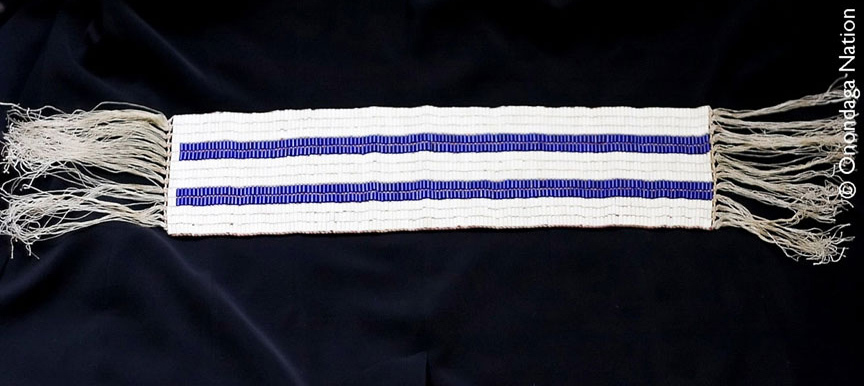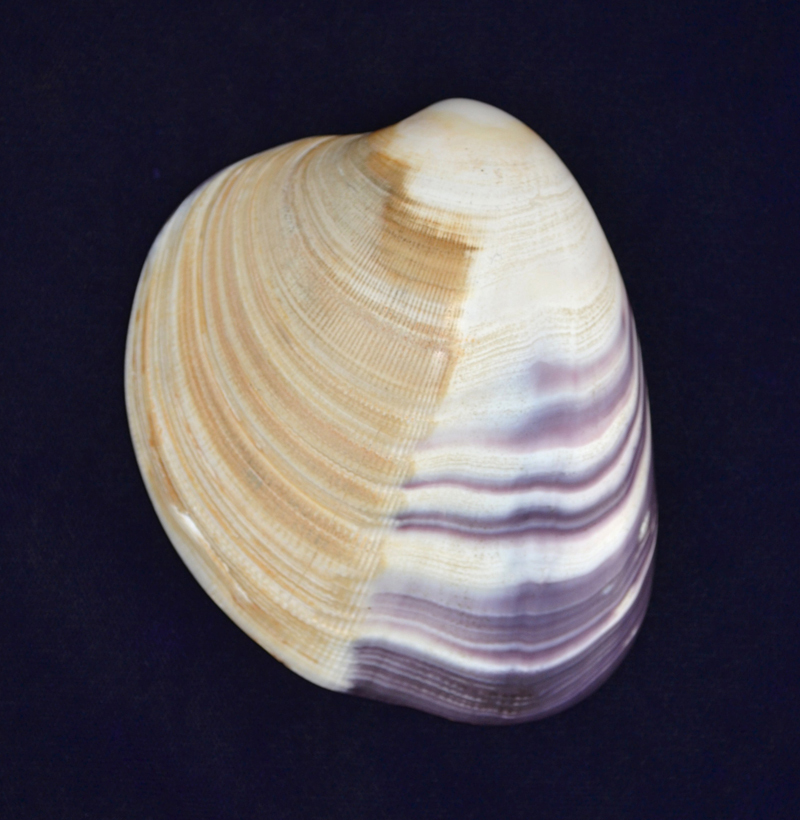Premodern Period
My work from the premodern period focuses on the wampum belt, particularly the Two Row Wampum belt.
What is a Wampum Belt? Wampum belts are traditional items made by the indigenous people of North America. These belts are arranged out of purple and white beads made from the quahog shell that “communicate visually via the contrast between purple and the white beads and the meaning inscribed in the resulting pattern” (Haas 85). Each bead and color pattern has a specific meaning, and the belts are read and interpreted to recount stories, laws, and treaties. They were also used as records of important events and agreements. Regarding treaties and laws, accepting a wampum belt mean agreeing to the terms it represented. They were used within tribes, between tribes, and eventually between settlers and the indigenous tribes.
The Two Row Wampum:
The Two Row Wampum, known traditionally as the Guswentah, was created by the Iroquois Confederacy. It was one of the earliest recorded agreements between Native American tribes and European settlers. This wampum belt is made of two rows of purple beads on a background of white beads. Each purple row represents a distinct path: one for the Indigenous canoe and the other for the European ship. It symbolizes the agreement that each group would travel their separate paths side by side without interfering in each others and "moving forward in peace along the river of life" (Two Row).
The Two Row Wampum helped to establish and document the terms of their agreement, as both parties recognized and respected their distinct but parallel lives (Haas 88). It showed the Iroquis' respect of intercultural relations and their willingnes to treat the settlers with peace. The principles embedded in the Two Row Wampum, like mutual respect and equity, had a lasting effect and impact. It is told to have helped shape the foundational ideas of American democracy and even the Constitution (Haas 79).
How are Wampum belts made and used? Wampum belts are built with beads crafted from the quahog clam shell (pictured to left). The white beads are made from the inner whorl of the shell and the purple beads from the shell’s dark spot or “eye” (Haas 78). The beads are then strung together using sinew, hemp, or tree bark twine (Haas 89). The beads are arranged in a specific way to communicate the desired agreement. This "coded language" makes the wampum belts functional tools for recording important treaties, ceremonies, and historical accounts. The meanings of the patterns are explained and passed down through generations, making sure the knowledge stays alive (Haas 89).

